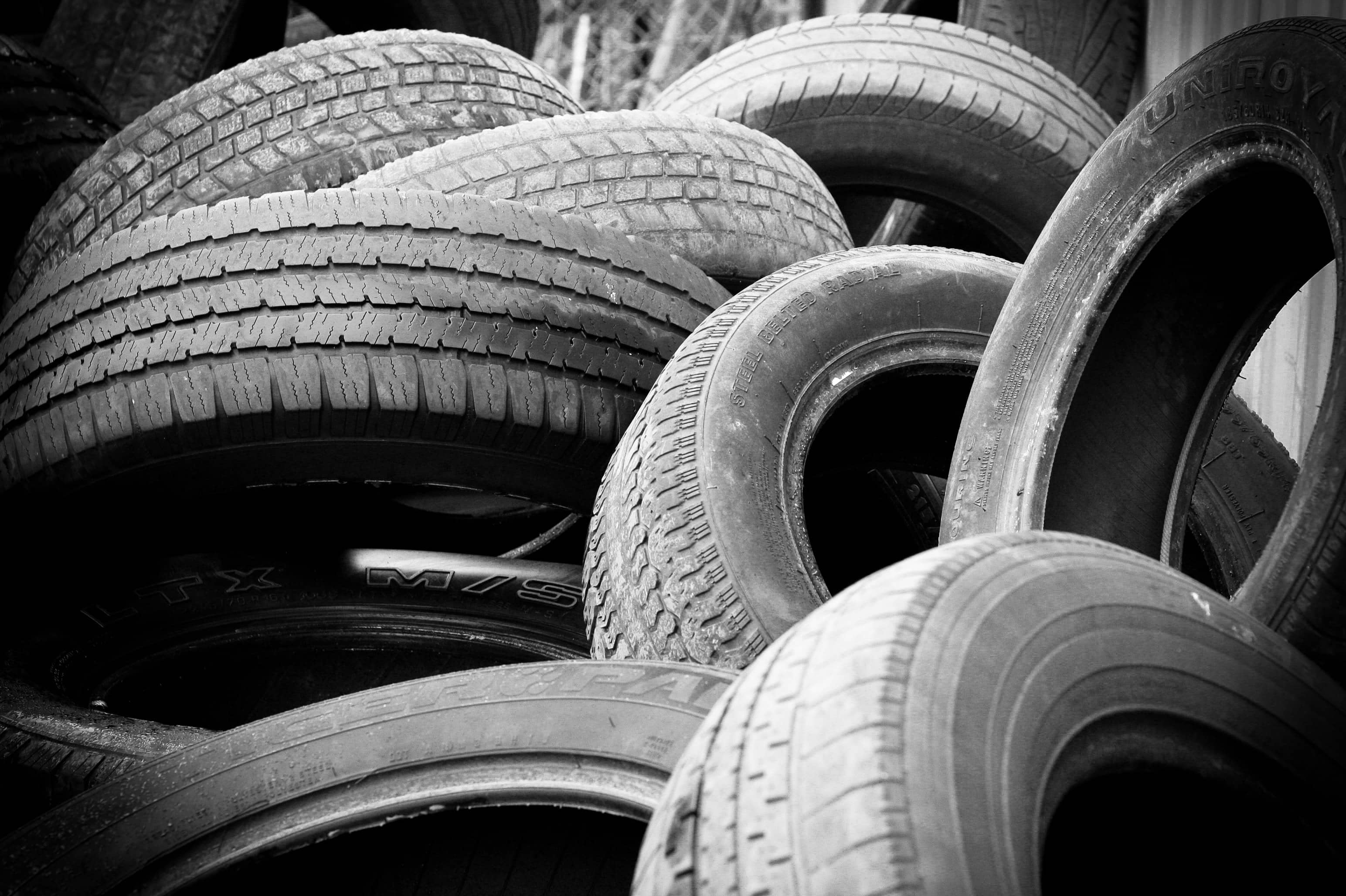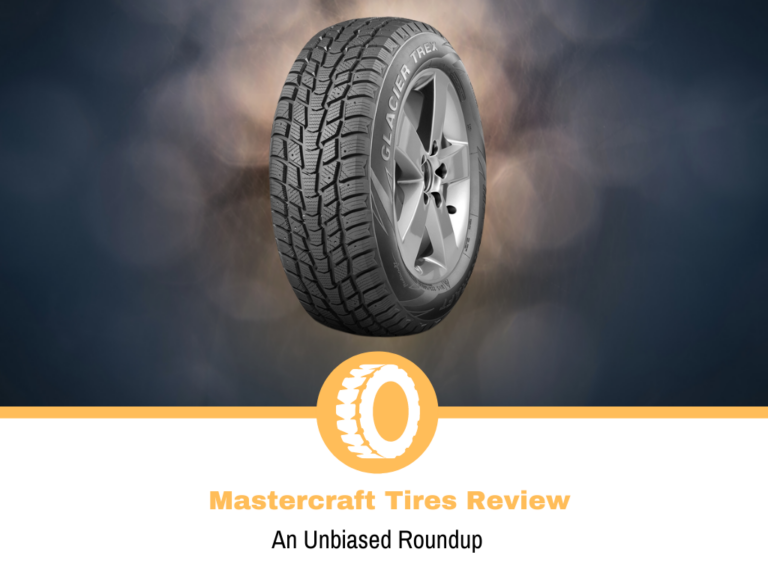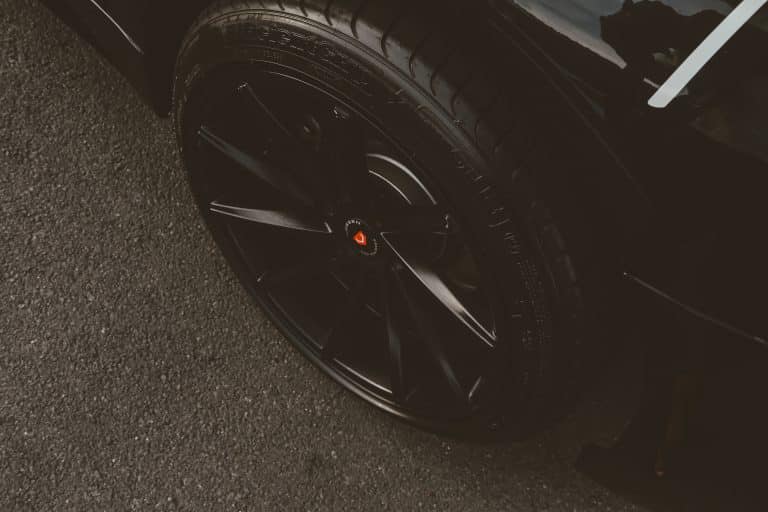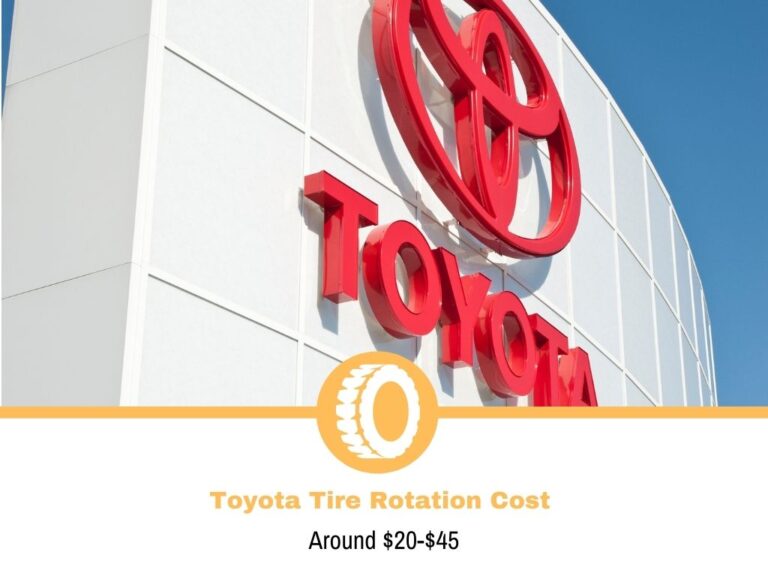Easy Solutions To Fix Inner Tire Wear
It’s virtually impossible to overemphasize the importance of tires as the entire car is connected to the road through four delicate pieces of rubber. As such, even the slightest tire position inconsistency and misalignment can cause your tires to wear unevenly and even become obsolete a lot earlier than usual.
How Can I Fix Inside Tire Wear?
There are a few different things you should try if you want your tires to stop wearing on the inside such as performing a wheel alignment, properly inflating the tires, balancing the wheels regularly, inspecting and replacing damaged suspension components, and checking the tire tread depth.
After you re-align your wheels and figure out why your tires are wearing on the inside, be sure to rotate them every 6 months or so to ensure they last as long as possible. If you are unable to fix inner tire wear even after you’ve successfully done everything listed in this article, you should take your car to a repair shop.
It’s always a good idea to have a professional check on your tires before you invest in a brand-new set of rubber as the issue might be a bit more difficult to solve without proper equipment.
What Causes Inside Tire Wear?
- Negative camber
- Worn ball joints
- Misaligned wheels
- Toe settings
- Worn tie rods
- Improperly inflated tires
- Faulty shocks and struts
Negative Camber
Negative camber is the most common cause of inner tire wear as the tire is not facing the road at the proper angle. This causes the inner tire to wear out faster because the entire weight of the car is placed mostly on the inner edge of the tire. The camber angle is associated with how even your tires sit on the road while driving in a straight line.
Be sure to face your tires arrow straight and try to inspect if the upper edge of the tire is tilted inwards and if the lower edge of the tire is tilted outwards. Sometimes you may not be able to spot negative camber with your eyes only so be sure to use a level.
Worn Ball Joints
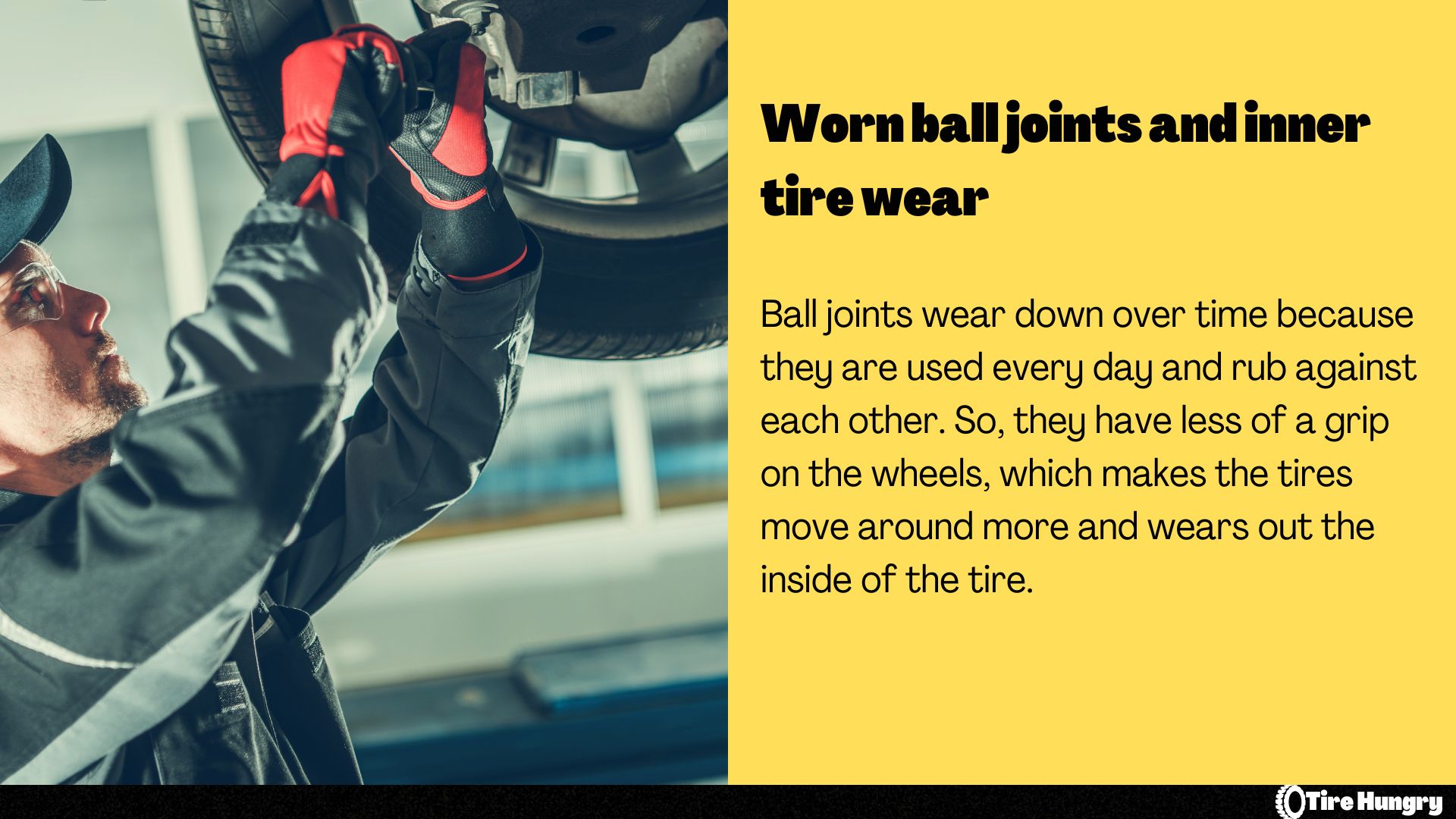
The ball joints are tasked with a relatively important mission, and that is to keep your tires rolling as precisely as possible. They are designed to connect the upper and the lower suspension control arms to the hub. However, worn ball joints are a typical suspension issue for many cars out there as they are not designed to last forever.
After a while, your ball joints are going to lose clamping force and this commonly results in inner tire wear. An easy way how one can spot worn-out ball joints is to slowly drive over a speed bump. If you hear weird sounds coming from the wheel well, chances are that your ball joints are busted.
Misaligned Wheels
An improper wheel alignment can easily mess up your camber as well. A great way to test this is by cruising on a straight and leveled piece of tarmac. If you sense the car is unable to go straight even if you point the steering wheel at the 12’o clock position, you are suffering from good old improper wheel alignment.
Toe Settings
Many people believe that the toe and camber measurements are the same, but they are not because the toe measurement is associated with the tire rotational angle around its vertical axis. As such, if the toe is off, your tires are most definitely going to wear unevenly.
If you want your tires to meet the road at the perfect angle with all the right measurements, be sure to go over the caster measurement while you are adjusting your camber and toe.
Worn Tie Rods
Your tie rods are tasked with maintaining the correct angle between both wheels while steering. In order for them to fulfill their duty correctly, they need to be greased every time you perform an oil change. If they are not greased often enough, they are going to wear out faster and cause issues with the steering linkage.
This usually leads to alignment issues down the line which directly influences inner tire wear. However, if your car is constantly being driven over mud, water, and grime, you should grease your tie rods even more frequently.
Improperly Inflated Tires
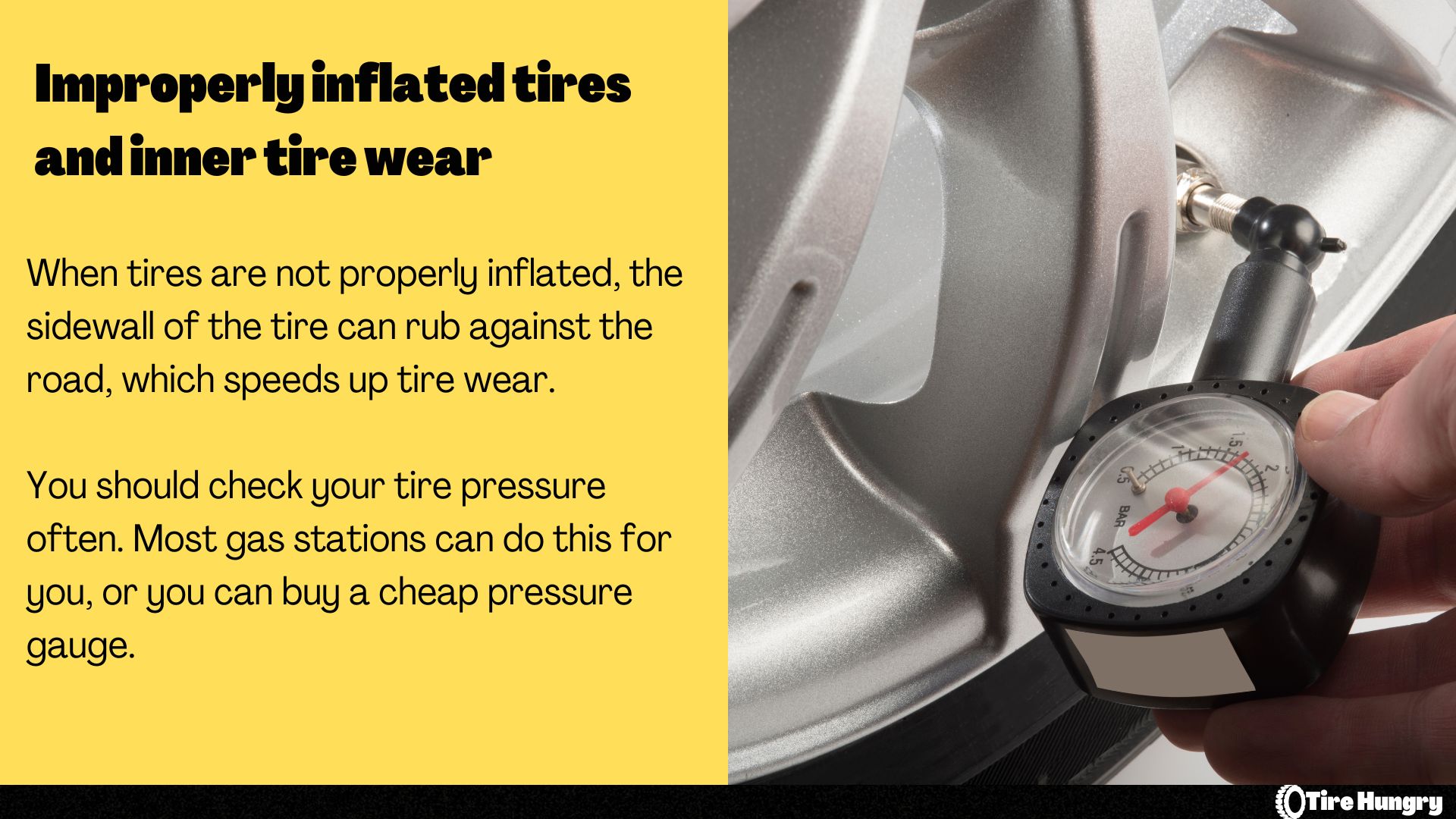
Tires are made with a specific air pressure level in mind. If you overinflate or underinflate your tires, they are like going to distort in shape and thus cause certain areas of the tire that wear faster. This can be easily fixed by simply airing up the tires according to the manufacturer’s recommendations.
Also be sure to go double-check the air pressure of your tires after you’ve rolled them for a few miles, just to be extra sure.
Faulty Shocks And Struts
Your shocks and struts are designed to make your car comfortable and able to easily go over uneven terrain without you even noticing it. If they start causing issues or if they are simply too old, they are going to make the ride bouncy and unsettled which is likely going to cause uneven tire wear.
An easy way how you can spot worn-out shocks and struts is if you start sensing increased vibrations levels through the steering wheel. To fix this you will have to replace these components with brand new ones.
Is It Safe To Drive On Unevenly Worn Tires?
An unevenly worn tire is precarious because you are never able to estimate the tire’s remaining life. Furthermore, uneven tire wear is known to become worse as time goes on which means that with every additional mile you take, the chances of tire blowout are significantly higher. As such, you should not drive a car with uneven tire wear if you don’t have to.
It’s difficult to properly gauge when your tires are unevenly worn enough for them to be unsafe, especially for someone who is not a professional. As mentioned at the beginning of this article, the importance of decent quality tires can not be emphasized enough because these few inches of the tire contact patch are what keep us on the road and not in the nearby bush.
What Is The Minimum Legal Tread Depth?
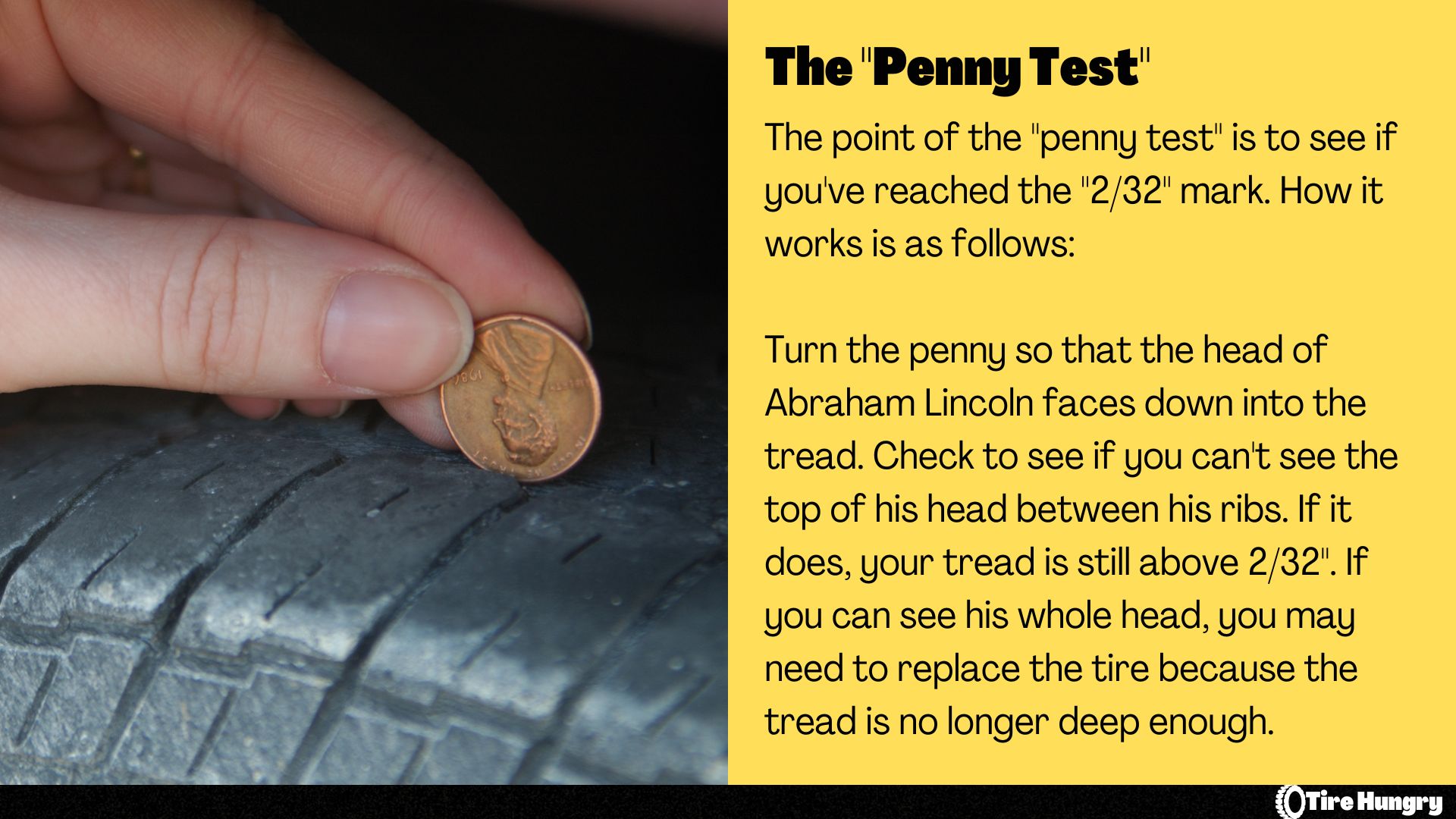
The majority of states have established the 2/32 of inch (1.6mm) tire rule which means that if your tread depth is worse than this, you are not only risking your safety, you are also risking the safety of everyone else around you, and your bank account. In any case, you should not drive your car if your tire tread depth is below 2/32 of an inch, regardless of state regulation.
The easiest and most common way how one can check the tire tread depth in no time is to perform the old trusty “Penny Test”. Take a regular U.S. penny and insert it in the tread. Be sure to place Lincoln’s head facing down and outwards. If you are able to see the president’s face, your tread levels are under 2/32 of an inch.
Also, be sure to check your tread levels on a few different spots, both inwards and outwards. If you have access to a car lift, be sure to lift the car. If not, you can also you a regular jack stand.
Can Inner Tire Wear Happen In Normal Circumstances?
Inner tire wear can indeed be caused by the terrain you are traveling over, but this is rarely ever the case. More often than not, the reason why your tires wear faster on the inside is that your camber and toe measurements are off. Anyhow, be sure to always inspect your tires for any potential damages that might have occurred during the time of use.
Inner tire wear is unlikely going to form if all of your measurements and components listed above are in great shape and position. If you are unable to pinpoint the issue, be sure to take the car to an experienced tire and repair shop as they are better equipped to deal with these sorts of issues.
How Much Does It Cost To Fix Inner Tire Wear?
It depends on what needs doing. If you just need a simple wheel alignment, it should run you for about $60-$100. If your ball joints or suspension control arms are to blame, that bill might ascend upwards of $300. If you need to replace all four ball joints and control arms, the cost to do this might even go past $2,000 with labor included.
A set of four shocks and struts with labor is likely going to run between $1,000 to $2,000 depending on the car’s make and model.
Conclusion
In order to fix inner tire wear the right way, you need to correctly pinpoint the exact culprit. To do this, you will have to go over all the components and measurements listed in this article. Sometimes the fix can be relatively easy as just airing up your tires.
At other times, the fix can cost more than $2,000. Either way, it’s always a good idea to take your car to an experienced repair shop as these are best at dealing with these sorts of issues.
